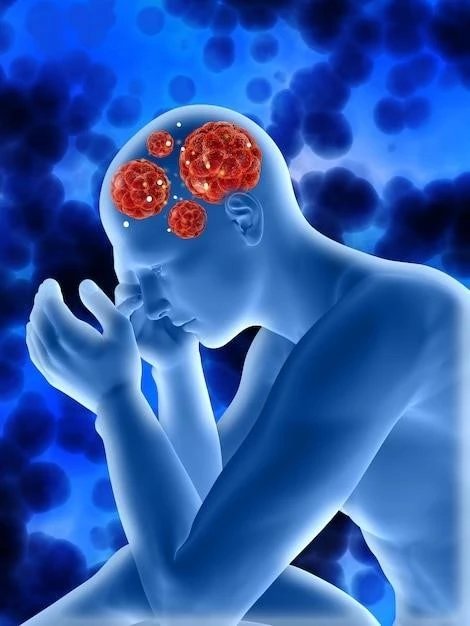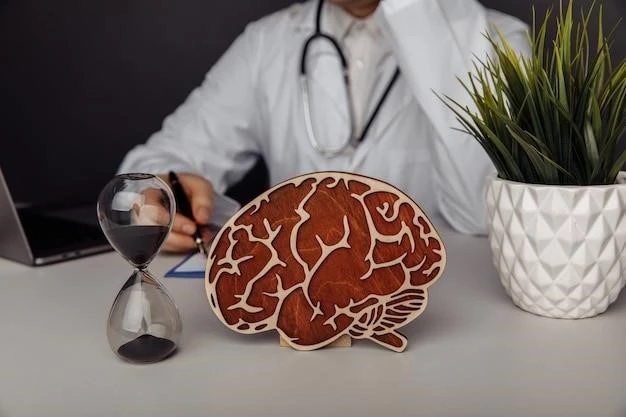Understanding Marfanoid Craniosynostosis Syndrome
Marfanoid Craniosynostosis Syndrome is a rare genetic disorder characterized by a combination of features seen in both Marfan syndrome and craniosynostosis․ It is a type of connective tissue disorder that affects the skeletal system, causing skeletal abnormalities and ophthalmologic abnormalities․
Individuals with this syndrome may exhibit symptoms such as long limbs, arachnodactyly, high arched palate, protruding forehead, and vision problems․ The diagnosis of Marfanoid Craniosynostosis Syndrome is usually based on clinical evaluation, genetic testing, and imaging studies․
Treatment options for Marfanoid Craniosynostosis Syndrome vary depending on the severity of the symptoms․ Orthopedic surgery may be required to address skeletal abnormalities, while ophthalmologic interventions can help manage vision problems․ Regular monitoring and management of cardiovascular complications are essential for individuals with this syndrome․
Overall, understanding the symptoms, diagnosis, and treatment options for Marfanoid Craniosynostosis Syndrome is crucial in improving the quality of life for affected individuals and reducing the risk of long-term complications․
Overview of Marfanoid Craniosynostosis Syndrome
Marfanoid Craniosynostosis Syndrome is a rare genetic disorder that combines characteristics of Marfan syndrome and craniosynostosis․ This syndrome affects the connective tissue, leading to a range of skeletal abnormalities and ophthalmologic abnormalities․ It is important to understand the key aspects of this complex disorder to provide appropriate care and support for affected individuals․
One of the primary features of Marfanoid Craniosynostosis Syndrome is the presence of skeletal abnormalities․ Individuals with this syndrome may have long limbs, joint hypermobility, arachnodactyly (long, slender fingers), a high arched palate, and other skeletal deformities․ These physical traits can impact mobility and quality of life․
In addition to skeletal abnormalities, ophthalmologic abnormalities are common in individuals with Marfanoid Craniosynostosis Syndrome․ Vision issues such as myopia (nearsightedness), astigmatism, and other eye conditions can occur․ Regular ophthalmologic evaluations are essential to monitor and address these issues․
The diagnosis of Marfanoid Craniosynostosis Syndrome is typically made based on a combination of clinical evaluation, genetic testing, and imaging studies․ The presence of both Marfan syndrome features and craniosynostosis in an individual can prompt further investigation to confirm the diagnosis․
Due to the complexity of this syndrome, a multidisciplinary approach involving medical geneticists, orthopedic specialists, ophthalmologists, and other healthcare professionals is often necessary for comprehensive care․ Treatment plans are tailored to address the specific symptoms and needs of each individual with Marfanoid Craniosynostosis Syndrome․
Overall, Marfanoid Craniosynostosis Syndrome presents unique challenges due to its combination of Marfan syndrome and craniosynostosis characteristics․ Understanding the underlying genetic and structural abnormalities is vital in managing the condition and improving outcomes for individuals affected by this rare syndrome․
Symptoms and Characteristics
Marfanoid Craniosynostosis Syndrome presents with a unique set of symptoms and characteristics that reflect its combined features of Marfan syndrome and craniosynostosis․ Individuals with this syndrome may exhibit a range of physical traits and health issues that can vary in severity․
Common symptoms of Marfanoid Craniosynostosis Syndrome include skeletal abnormalities such as long limbs, joint hypermobility, arachnodactyly (characterized by long, slender fingers), and a high arched palate․ These skeletal features can affect an individual’s physical appearance and may impact their musculoskeletal function․
In addition to skeletal abnormalities, individuals with this syndrome often experience ophthalmologic abnormalities․ Vision problems such as myopia (nearsightedness), astigmatism, and other eye conditions are prevalent․ Regular eye examinations are crucial for monitoring and managing these ophthalmologic issues․
Facial characteristics may also be distinctive in individuals with Marfanoid Craniosynostosis Syndrome, with some individuals presenting with a protruding forehead and other craniofacial abnormalities․ These features can contribute to the unique appearance of individuals affected by this syndrome․
Clinically, the diagnosis of Marfanoid Craniosynostosis Syndrome is based on a combination of physical examination findings, genetic testing, and imaging studies․ The presence of both Marfan syndrome features and craniosynostosis in an individual raises suspicion for this rare genetic disorder․
Due to the complex nature of Marfanoid Craniosynostosis Syndrome, comprehensive medical assessment and evaluation by a team of healthcare specialists are essential to ensure accurate diagnosis and appropriate management․ Understanding the diverse symptoms and characteristics of this syndrome is crucial for optimizing care and support for affected individuals․

By recognizing the distinct symptoms and characteristics associated with Marfanoid Craniosynostosis Syndrome, healthcare providers can effectively tailor treatment plans to address the specific needs of each individual and improve their quality of life in the long term․
Diagnosis and Medical Assessment
Diagnosing Marfanoid Craniosynostosis Syndrome involves a thorough medical assessment that combines clinical evaluation, genetic testing, and imaging studies to confirm the presence of this rare genetic disorder․ Healthcare providers rely on a multidisciplinary approach to accurately diagnose and manage individuals with this complex syndrome․
During the diagnostic process, healthcare professionals conduct a comprehensive physical examination to assess the presence of skeletal abnormalities, ophthalmologic issues, and other characteristic features associated with Marfanoid Craniosynostosis Syndrome․ The physical exam may reveal long limbs, joint hypermobility, arachnodactyly, high arched palate, and craniofacial abnormalities․
Genetic testing plays a crucial role in confirming the diagnosis of Marfanoid Craniosynostosis Syndrome․ By analyzing specific genetic markers and mutations associated with this syndrome, healthcare providers can identify the underlying genetic abnormalities that contribute to the development of skeletal and ophthalmologic issues in affected individuals․
Imaging studies, such as X-rays, CT scans, or MRI scans, may be conducted to further evaluate skeletal deformities, bone structure abnormalities, and cranial features that are characteristic of Marfanoid Craniosynostosis Syndrome․ These imaging modalities help healthcare providers visualize and assess the extent of skeletal and craniofacial anomalies․
Given the complexity of Marfanoid Craniosynostosis Syndrome, a team of specialists comprising medical geneticists, orthopedic surgeons, ophthalmologists, and other relevant healthcare professionals collaborate to ensure a comprehensive medical assessment․ This collaborative approach enables a more thorough evaluation and accurate diagnosis of the syndrome․
Early and accurate diagnosis of Marfanoid Craniosynostosis Syndrome is crucial for initiating timely interventions and developing tailored treatment plans to address the unique needs of each individual․ By utilizing a combination of clinical evaluation, genetic testing, and imaging studies, healthcare providers can effectively diagnose and manage this rare genetic disorder․
Overall, the diagnostic and medical assessment process for Marfanoid Craniosynostosis Syndrome requires meticulous evaluation and collaboration among healthcare specialists to provide optimal care and support for individuals affected by this complex syndrome․
Treatment Options
Treating Marfanoid Craniosynostosis Syndrome involves a multidisciplinary approach to address the diverse symptoms and complications associated with this rare genetic disorder․ The treatment plan is tailored to the specific needs of each individual and may include a combination of surgical interventions, medical management, and supportive care․
For individuals with skeletal abnormalities, orthopedic surgery may be necessary to correct deformities, improve musculoskeletal function, and enhance mobility․ Surgical procedures such as limb lengthening, joint stabilization, or spinal fusion may be performed by orthopedic specialists to address skeletal issues․
Ophthalmologic abnormalities in individuals with Marfanoid Craniosynostosis Syndrome require specialized care from ophthalmologists․ Treatment options for vision problems may include prescription eyewear, corrective lenses, or surgical interventions to address conditions such as myopia, astigmatism, and other eye issues․
Medical management of cardiovascular complications is crucial for individuals with Marfanoid Craniosynostosis Syndrome, as they are at risk of developing heart-related issues․ Regular monitoring of cardiovascular health, blood pressure management, and medication therapy may be recommended to reduce the risk of cardiovascular complications․
Supportive care plays a significant role in the overall management of Marfanoid Craniosynostosis Syndrome․ Physical therapy, occupational therapy, and genetic counseling can provide valuable support and guidance to affected individuals and their families․ These supportive services help optimize function and quality of life․
Genetic counseling is essential for individuals with Marfanoid Craniosynostosis Syndrome and their families to understand the genetic basis of the disorder, explore inheritance patterns, and make informed decisions regarding family planning․ Genetic counselors offer emotional support and educational resources to navigate the complexities of the syndrome․
Regular follow-up appointments with a multidisciplinary team of healthcare providers are vital for ongoing monitoring and management of Marfanoid Craniosynostosis Syndrome․ Continual assessment of symptoms, surveillance for potential complications, and adjustments to treatment plans are necessary to ensure optimal care․
By integrating surgical interventions, medical management, supportive care, and genetic counseling into a comprehensive treatment approach, healthcare providers can improve the quality of life and long-term outcomes for individuals with Marfanoid Craniosynostosis Syndrome․ Collaboration among specialists is key to addressing the multifaceted needs of individuals with this rare genetic disorder․
Prognosis and Long-term Management
The prognosis for individuals with Marfanoid Craniosynostosis Syndrome varies depending on the severity of symptoms, the timing of interventions, and the presence of complications․ Long-term management of this rare genetic disorder involves ongoing monitoring, proactive intervention, and supportive care to optimize outcomes and quality of life․
With early diagnosis and access to appropriate treatments, individuals with Marfanoid Craniosynostosis Syndrome can experience improved outcomes and better overall health․ Timely interventions, such as orthopedic surgery to address skeletal abnormalities or ophthalmologic interventions for vision issues, can help manage symptoms effectively․
Regular follow-up appointments with a multidisciplinary healthcare team are essential for monitoring the progression of Marfanoid Craniosynostosis Syndrome and addressing any emerging issues promptly․ Continual assessment of skeletal, ophthalmologic, and cardiovascular health is crucial for detecting and managing complications․
Cardiovascular complications are a significant concern for individuals with Marfanoid Craniosynostosis Syndrome, as they are at risk of developing heart-related issues such as aortic enlargement or mitral valve prolapse․ Long-term management may involve medication therapy, lifestyle modifications, and surgical interventions to prevent complications․
Physical therapy and occupational therapy play important roles in the long-term management of Marfanoid Craniosynostosis Syndrome by promoting musculoskeletal function, mobility, and overall well-being․ These therapies can help individuals maintain strength, flexibility, and independence in daily activities․
Genetic counseling is essential for individuals and families affected by Marfanoid Craniosynostosis Syndrome to navigate the genetic implications of the disorder, understand inheritance patterns, and make informed decisions regarding family planning․ Genetic counselors offer support and resources to address the emotional and practical considerations associated with the syndrome․
Proactive long-term management of Marfanoid Craniosynostosis Syndrome focuses on optimizing overall health, function, and well-being for affected individuals․ By incorporating a comprehensive care plan that addresses the diverse needs of individuals with this rare genetic disorder, healthcare providers can enhance the prognosis and quality of life for those impacted by the syndrome․
